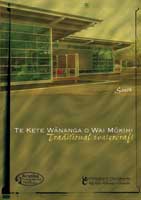Library Names: the Stories of the Bilingual Names for Christchurch City Libraries

The Waitaha people would have known this area first, and then came Kāti Mamoe and, later, Kāi Tahu. Beckenham circuit, where the new library is situated, was traditionally used by Māori as a mahika kai or a place for gathering food. The only remaining area of the marsh today is the Beckenham Ponds, formed from natural springs in the nearby Beckenham Park.
The swamps draining into the Ōpāwaho River were called Te Kuru and the upper reaches of the river at Spreydon bore the name Wai Mōkihi after a smaller pā located there called Ōmōkihi meaning 'place of the flax staff rafts'. These craft were used by Māori to cross the river before a bridge was built. They are temporary watercraft constructed by binding together reed shafts and forming a very able means of travel over short distances.
The river contained different types of eels (tuna), tūere (blind eel), kanakana (lamprey), native trout (kōkopu), small freshwater crayfish (kōura), tidal herrings (aua ā tai) and whitebait (inaka). The people of this area were known for their abilities in aquaculture and night fishing. Māori fisherman did not carry lights, but speared eels by listening for them. The hills close by would also have been home to moa and weka.
When Europeans came to the area, they changed the Ōpāwaho to the Heathcote River. Captain Joseph Thomas, the Canterbury Association's surveyor, named it after Sir William Heathcote, who was a committee member of the Association in England.

